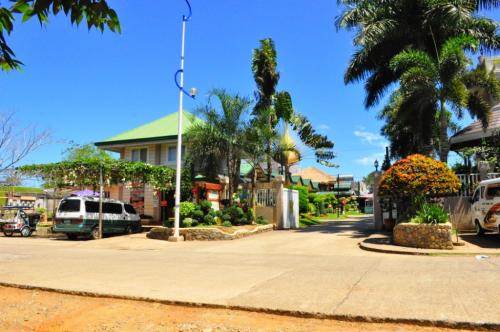Manila
The San Agustin Church and Museum which is a private museum under the supervision of the Augustinian Friars is housed inside the Old Monastery of the Church. The collection include 26 huge oil paintings of saints; the DOn Luis Araneta Collection of Antique Santos; the crypt, where Philippine notables are buried, leads to the refactory with its fine collection of colonial religious art; the Capitualtion Room, where the Spanish surrendered to the Americans in 1898; the Sacristy, which houses antique carrosas, richly embroided vestments, a wonderful Saint Michael; and the famous choir loft handcarved from molave wood that dates back to 1614.How to get to San Agustin Church and MuseumFrom Mabini and Pedro Gil St., hail a PUJ bound for the pier and get off at Bonifacio Drive intersection. The San Agustin Church Museum is a 10-minute walk towards Aduana St. As an alternative route, one can take any pier-bound PUJ in Quezon City and get off at Aduana St.Travel Time: Approximately 25 minutes (from Manila proper). Approximately 1 hour and 15 minutes (from Quezon City).Source:Flyphilippines.info
Baliuag
San Agustin Parish Church is located in Baliuag, Bulacan, Philippines. Constructed between 1769 to 1774, the style of Baliuag church is Baroque as seen on the facade and interiors. Dramatic tension is created by the interplay of volumes and openings. The Practico is the latest addition which mars the complete layout of style. Source:Bulacan.gov.ph
Gumaca
San Antonio de Alcala Park is located in Maharlika Highway, Gumaca, Quezon, Philippines. Named after the towns Patron saint, the park features a promenade area facing Lamon Bay and the neighboring island of Alabat. Source:Tourism.qzn.ph
Sibulan
Though Sibulan had already a resident priest in 1833, it only became a parish town in 1838. Father Mateo Saplad, a Cebuano secular priest, was the first resident priest. Within a span of three years after his arrival, he built a modest church and convent made of fine timber. The modest church became the parish of Saint Anthony de Padua. St. Anthony of Padua, the Catholic patron saint of lost items, the poor and travelers. For the ardent devotees of San Antonio de Padua in the Visayas and even in Mindanao, June 13 is a red-letter day. Source:Saint Anthony de Padua Parish
Siquijor
Siquijor has been known to be the ground zero for magic and sorcery in the Philippines and had long been associated with witches and sorcerers. While some outsiders feared to be near Siquijor in fear of shamans, sorcerers, and witches, trade involving agimat and anting-anting, and other amulets supposed to give the owner special powers thrived. Believers of ancient healing trooped to Siquijor in hope to find a cure of help in whatever issues they had. Witness how the locals blend potions and make amulets at San Antonio Village. Here elderly men and women engage in the preparation of folk and herbal medicine during the Lenten Season. Read more about Siquijor's ready-to-use-potions. Source:Paul Spencer SochaczewskiAbout.com
Bulusan
San Benon Spring is located in Bulusan, Sorsogon, Philippines. A newly developed resort, a place where you could find a mixture of sulfuric, steaming the original source of lukewarm and cool waters from the foot of Mt. Bulusan. Source:Regional Development Council V
Gumaca
San Diego Park is located in Barangay Villa Bota, Gumaca, Quezon, Philippines. It is also known as the park outside the town because it is located 2 kilometers away from the Poblacion. It is located in Barangay Villa Bota, Gumaca, Quezon. Source:Flyphilippines.com.ph
Catmon
The San Guillermo Church in Catmondaan, Catmon was the venue of the Christianization of the town's natives. It was established in November 2, 1835 and was named after the town's patron saint, San Guillermo de Aquitania. Much of the church's primary structure remains intact until today. Source:Cebu Province Official Websitecebudaily.com
Claveria
This beach is located in barangay San Isidro extending south to east from the barangay proper with an approximate and aggregate length of four (4) kilometers. Its fine and silvery white sand can easily accommodate over a thousand people. The bottom of the sea is clear and sandy extending some one hundred meters from the shoreline with a gradual (depth of 5 to 7 feet) during high tide. Further from the shoreline are beautiful and colorful coral reefs which are inhabited by a wide variety of fishes. The beach is lined by coconut trees. Source:Mandaon.com
San Joaquin
The San Joaquin Cemetery is one of a number built in Iloilo province during the 19th century, it is located along the highway leading to the town center. A flight of 20 steps leads up to the San Joaquin cemtery compound where a grandiose hexagonal mortuary chapel, decorated with classical motifs, stands. The mortuary known as "Camposanto" including the steps leading to it is made of coral rock and has just recently been nicely restored and is a must see attraction.. Source:Iloilo Heart of the Philippines
